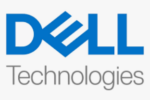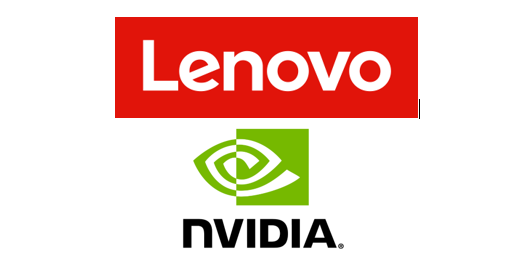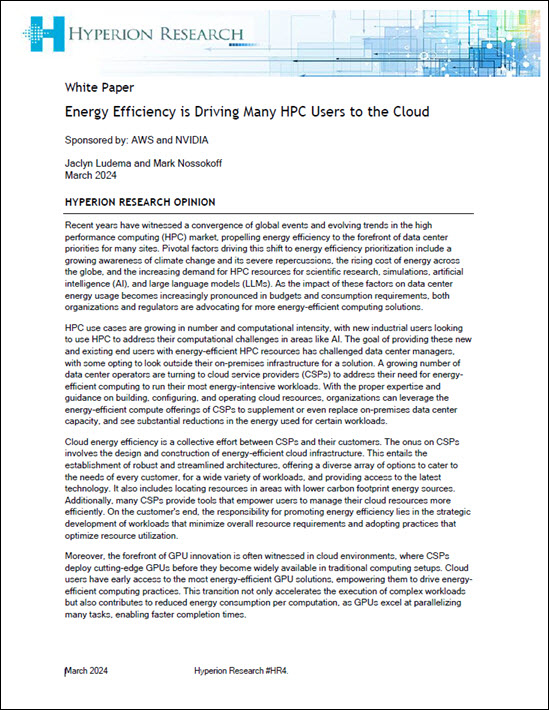SAN JOSE, March 18, 2024 – Today at NVIDIA GTC, Hewlett Packard Enterprise (NYSE: HPE) announced updates to its AI-native portfolios to advance the operationalization of generative AI (GenAI), deep learning, and machine learning (ML) applications. The updates include: Availability of two HPE and NVIDIA co-engineered full-stack GenAI solutions. A preview of HPE Machine Learning Inference […]
Hewlett Packard Enterprise Debuts AI-Native Portfolio for Generative AI
Hammerspace Unveils the Fastest File System in the World for Training Enterprise AI Models at Scale

[SPONSORED GUEST ARTICLE] Hammerspace, the company orchestrating the Next Data Cycle, unveiled the high-performance NAS architecture needed to address the requirements of broad-based enterprise AI….
Accelerated HPC for Energy Efficiency with AWS and NVIDIA

Many industries are starting to run HPC in the cloud. Find out how GPU-accelerated compute, from AWS and NVIDIA, is helping organizations run HPC workloads and AI/ML jobs faster, in a more energy-efficient way.
Lambda Raises $320M to Build NVIDIA GPU Cloud for AI

SAN JOSE, Feb. 15, 2024 — Lambda, the GPU cloud company powered by NVIDIA GPUs, today announced it has raised a $320 million Series C led by Thomas Tull’s US Innovative Technology with participation from new investors B Capital, SK Telecom, funds and accounts advised by T. Rowe Price Associates, Inc., and existing investors Crescent […]
GPU-powered HPC Workloads in the Cloud with AWS and NVIDIA

[SPONSORED GUEST ARTICLE] Across industries cloud-based high performance computing (HPC) is on the rise. Find out from AWS and NVIDIA how GPU-accelerated compute is helping organizations run more HPC workloads and AI/ML jobs faster, in a more energy-efficient way.
Optical I/O Takes Center Stage at SC23

[SPONSORED GUEST ARTICLE] Integration of optical I/O with an FPGA is the tip of the iceberg of a new vision to enable new HPC/AI architectural advances through ubiquitous optical interconnects for every piece of compute silicon. If you are attending SC23 November 12-17, be sure to visit Ayar Labs in booth #228 for an exclusive look at the future….
Kickstart Your Business to the Next Level with AI Inferencing

{SPONSORED GUEST ARTICLE] Check out this article form HPE (with NVIDIA.) The need to accelerate AI initiatives is real and widespread across all industries. The ability to integrate and deploy AI inferencing with pre-trained models can reduce development time with scalable secure solutions….
Federated GPU Infrastructure for AI Workflows

[Sponsored Guest Article] With the explosion of use cases such as Generative AI and ML Ops driving tremendous demand for the most advanced GPUs and accelerated computing platforms, there’s never been a better time to explore the “as-a-service” model to help get started quickly. What could take months of shipping delays and massive CapEx investments can be yours on demand….
HPC, AI, ML and Edge Solutions Drive Duos Railcar Inspection System Powered by Dell Technologies and Kalray

Industries such as railways are moving from traditional inspection methods to using AI and ML to perform automated inspection of….
Improving Product Quality with AI-based Video Analytics: HPE, NVIDIA and Relimetrics Automate Quality Control in European Manufacturing Facility

Manufacturers are using the power of AI and video analytics to enable better quality control and traceability of quality issues, bringing them one step closer to….




